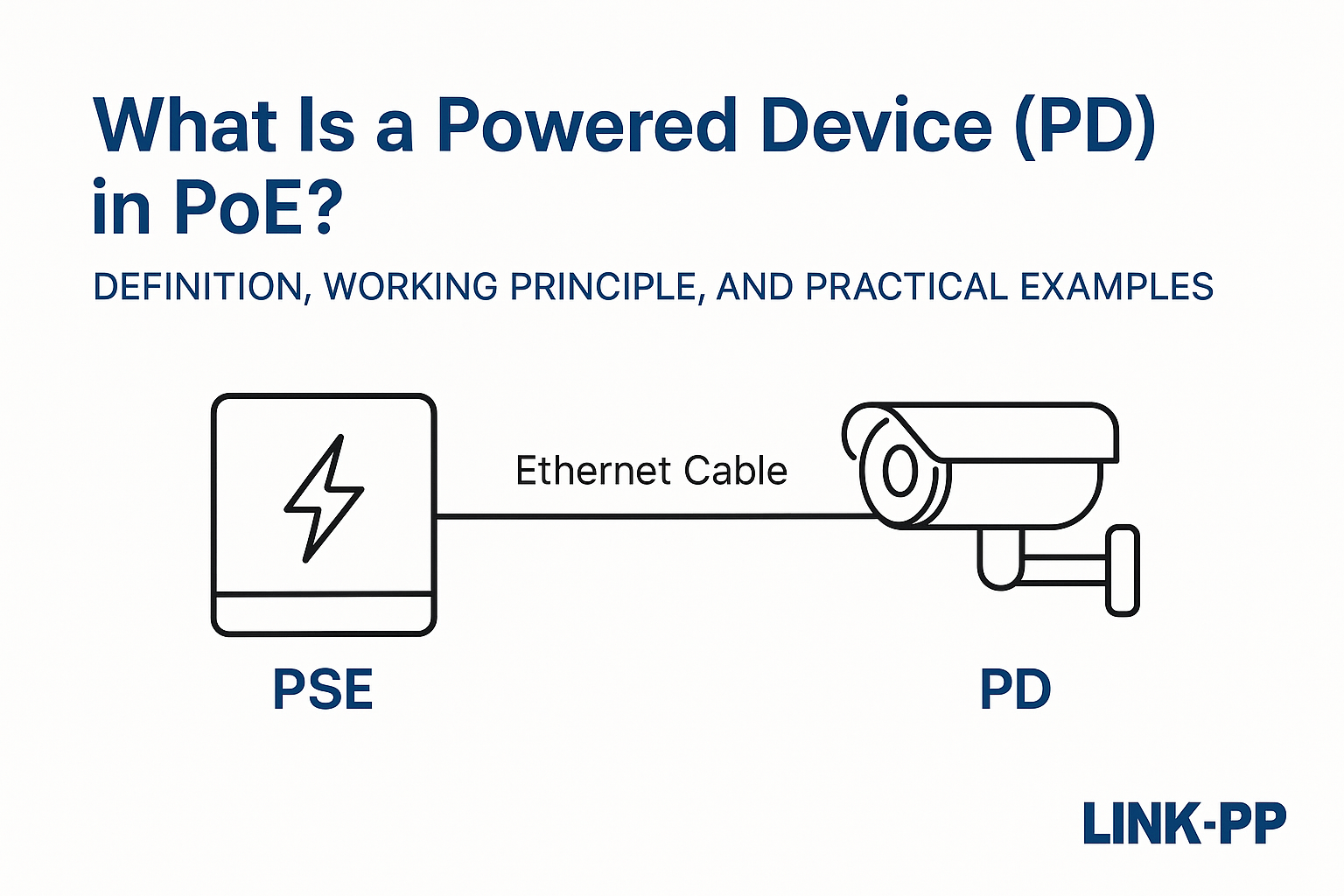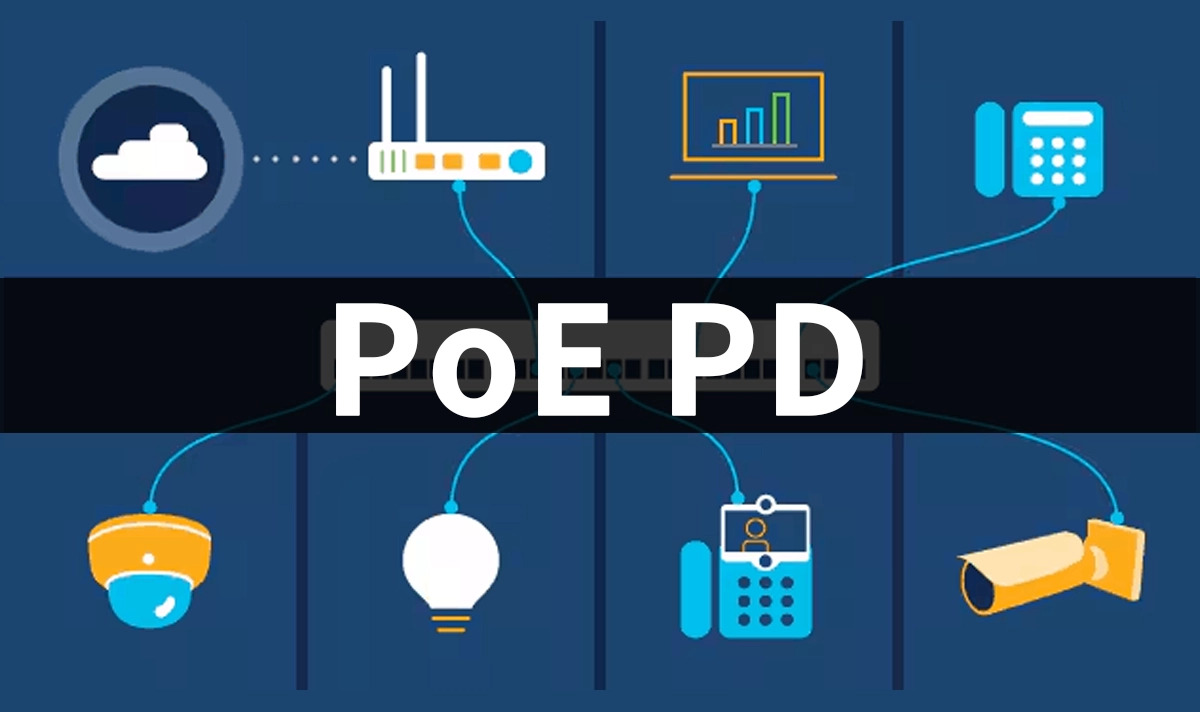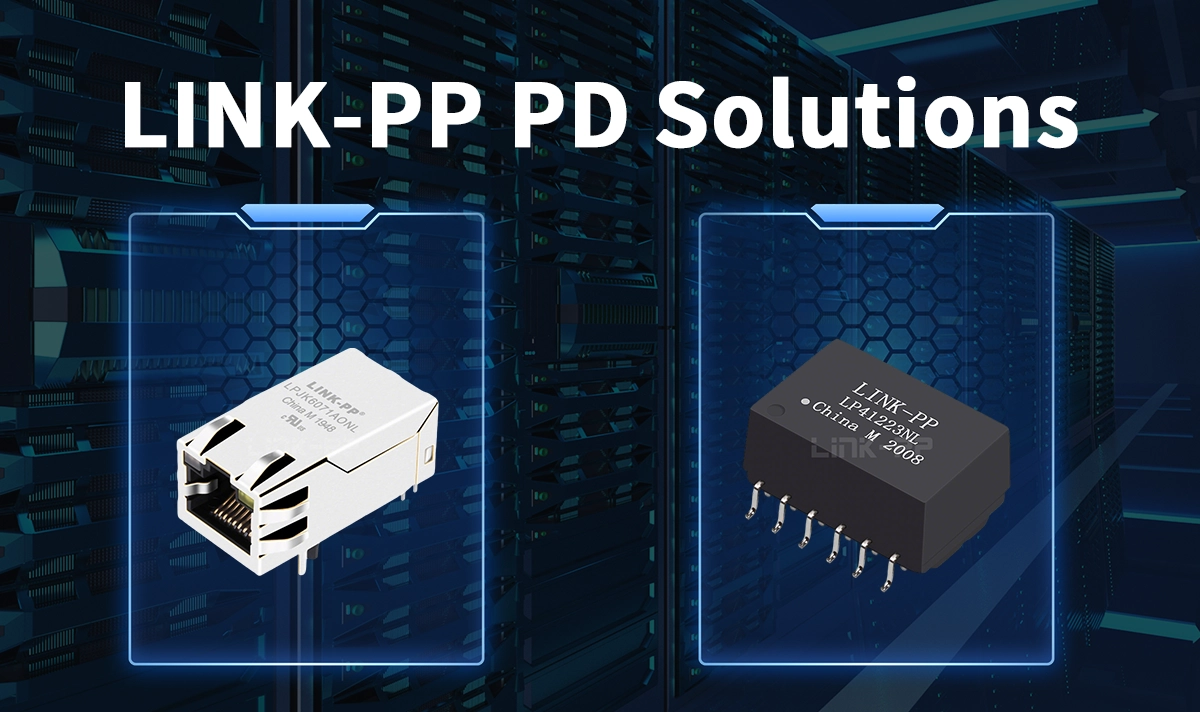
🔹 Introduction
In Power over Ethernet (PoE) technology, the Powered Device (PD) plays a vital role. It’s the endpoint that receives both data and power through a single Ethernet cable from a Power Sourcing Equipment (PSE) — typically a PoE switch or injector.
From security cameras to wireless access points and VoIP phones, PDs simplify deployment, reduce clutter, and enhance network flexibility in modern smart buildings and enterprise systems.
🔹 What Is a Powered Device (PD)?
A Powered Device (PD) is any network device that draws electrical power from an Ethernet connection following IEEE PoE standards.
Instead of relying on an external power adapter, a PD uses the same cable that carries Ethernet signals to obtain power safely from the PSE.

Common PD examples include:
IP Cameras and PTZ Cameras
VoIP Phones
Network Hubs or Mini-Switches
IoT Sensors and Smart Controllers
By integrating power delivery with data transfer, PDs reduce installation complexity and increase system reliability.
🔹 How a PD Works in a PoE System
The PoE power delivery process follows a precise handshake defined by the IEEE 802.3 standard to ensure compatibility and safety:
Detection – The PSE detects a valid PD by sensing its signature resistance (around 25 kΩ).
Classification – The PD communicates its power class (from Class 0 to 8), telling the PSE how much power it needs.
Power-Up – The PSE applies DC voltage to the cable; the PD starts receiving power.
Maintain Power – The PD draws a minimum current to signal it’s still active.
Disconnect – When unplugged or powered down, the PSE stops sending power automatically.
This standardized process ensures that only compliant PDs are powered, preventing electrical damage to non-PoE devices.
🔹 PD Power Classes and PoE Standards
PoE has evolved to support various power levels and device categories:
IEEE Standard | Type | PSE Power | PD Power | Typical Devices |
|---|---|---|---|---|
802.3af (PoE) | Type 1 | 15.4 W | 12.95 W | IP phones, WAPs |
802.3at (PoE+) | Type 2 | 30 W | 25.5 W | Cameras, APs |
802.3bt (PoE++) | Type 3 / 4 | 60–100 W | 51–90 W | PTZ cameras, LED lighting, displays |
Modern PDs are often backward-compatible, allowing safe operation with older PSEs, though with lower available power.
🔹 PD Hardware Design Considerations
Inside every PD is a PoE front-end circuit that manages power negotiation and electrical isolation.
A key element is the LAN transformer (magnetics) — it separates power and data paths while maintaining signal integrity.
PD designers must also consider:
Proper isolation voltage (usually 1500 Vrms or higher)
Thermal dissipation under full power draw
PoE signature resistors and classification circuits
Mode A/B or 4-pair operation compatibility
Choosing the right PoE-integrated RJ45 connector and magnetics transformer helps achieve stable power and EMI performance.

For engineers and OEMs designing PD interfaces, LINK-PP provides a broad range of PoE-compatible components tested for IEEE 802.3 standards:
LPJK6072AONL – Integrated RJ45 connector supporting PoE and Gigabit Ethernet. Ideal for compact PD designs such as IP cameras and WAPs.
LP41223NL – PoE+ magnetics transformer designed for 10/100 Base-T Ethernet PDs, ensuring strong isolation and balanced current flow.
Using verified PoE-rated components from LINK-PP helps ensure power safety, reduce EMI, and simplify PCB layout.
🔹 Why PDs Matter in Modern Networks
As IoT and intelligent edge devices proliferate, PoE-powered PDs offer a scalable way to deploy connected systems.
They enable centralized power management, remote reboot capability, and flexible device placement — all through a single Ethernet cable.
This efficiency has made PDs a backbone of smart buildings, industrial automation, and enterprise wireless infrastructure.
🔹 Conclusion
A Powered Device (PD) is more than just a PoE endpoint — it’s a critical element enabling efficient, safe, and intelligent power distribution across IP networks.
Whether you’re designing a new product or upgrading infrastructure, ensuring your PD components comply with IEEE 802.3 af/at/bt is key to reliability and interoperability.
For proven, high-quality PoE-ready connectors and magnetics, explore LINK-PP’s product range — including solutions like LPJK6072AONL and LP41223NL that are optimized for PD integration.


